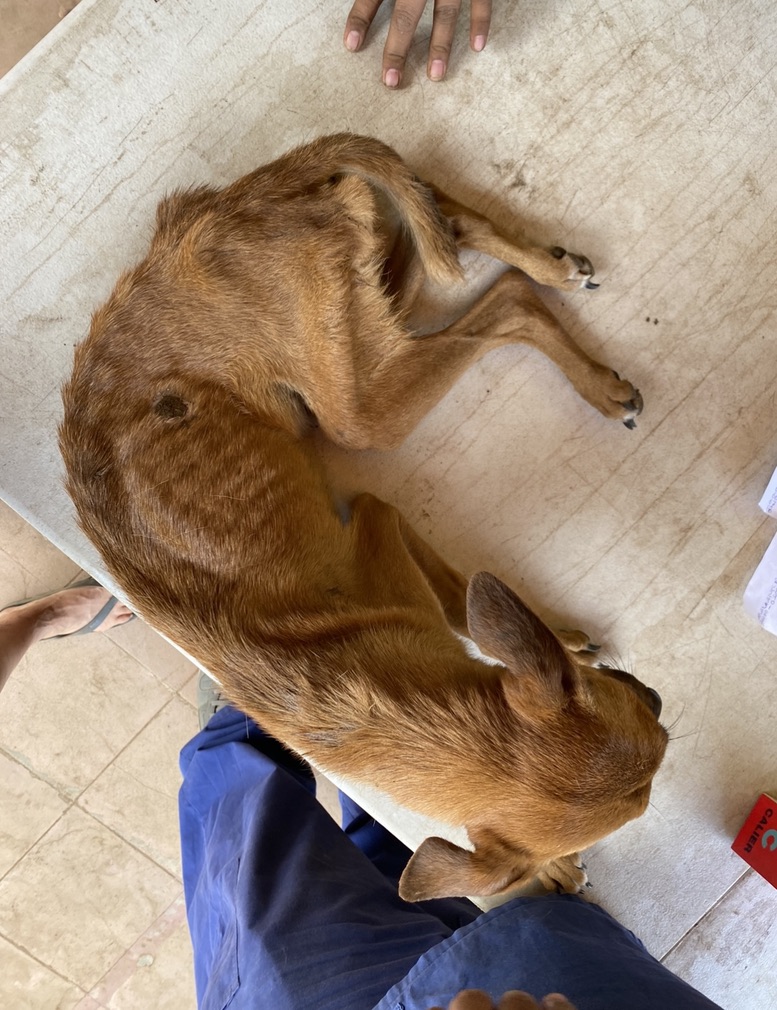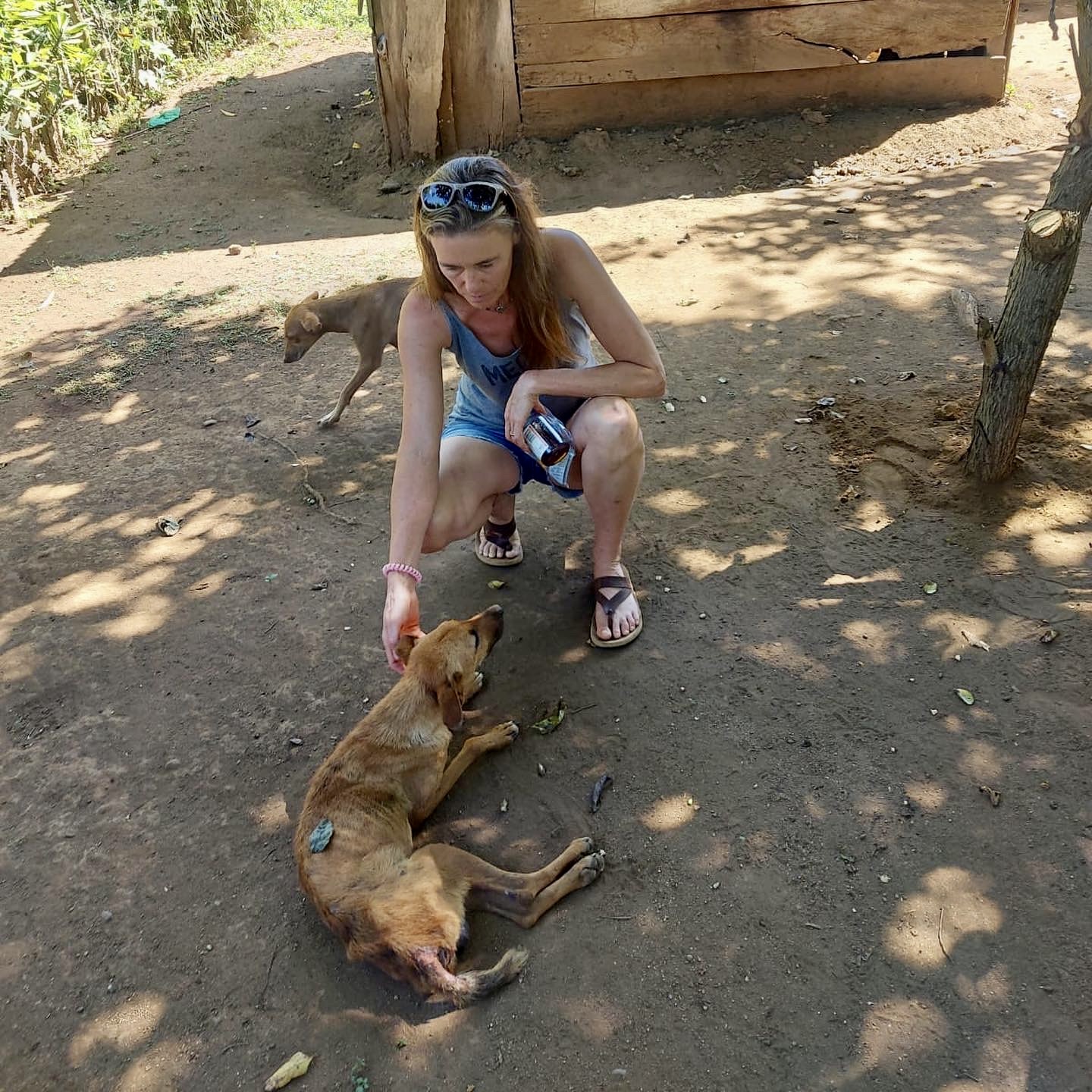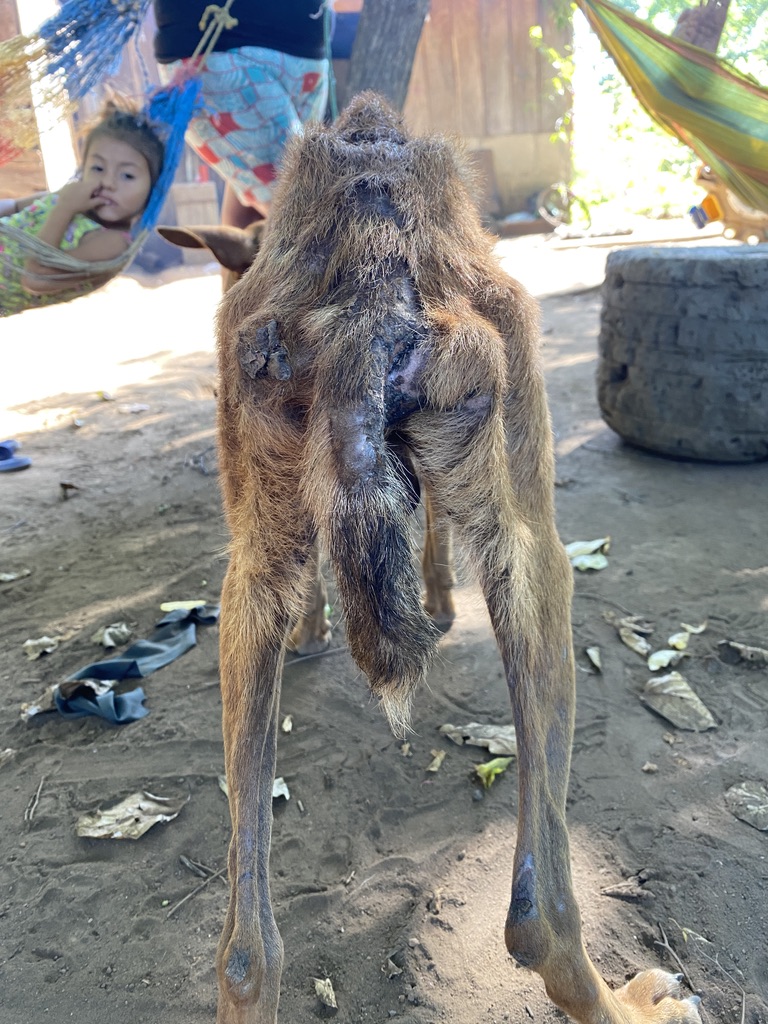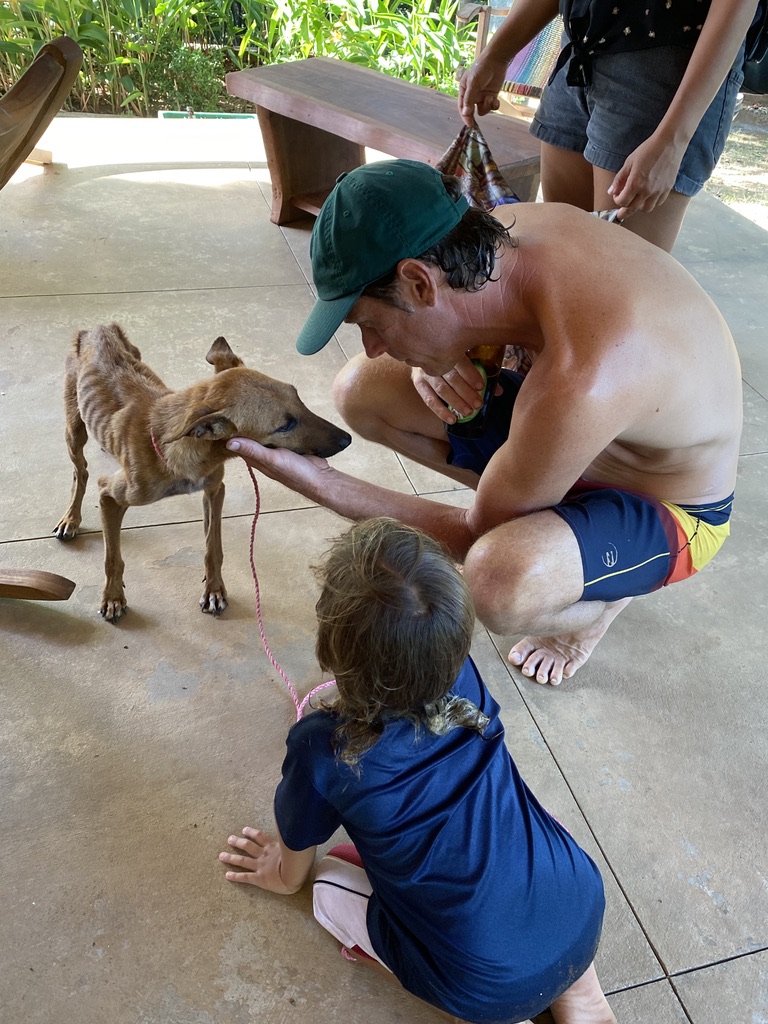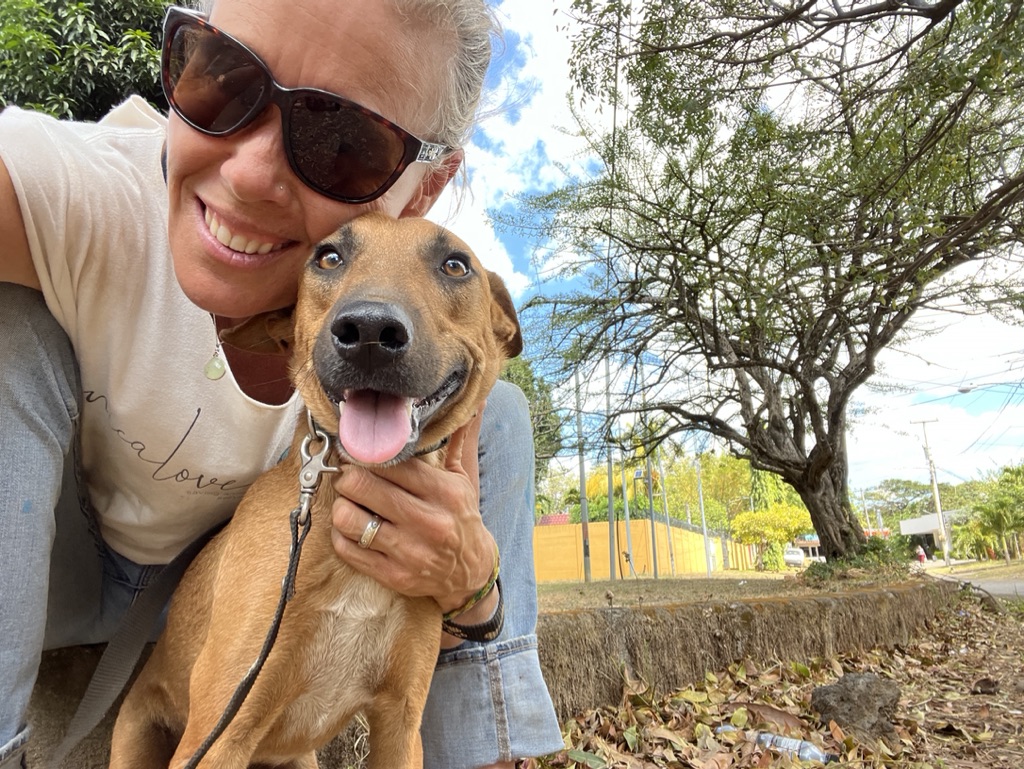Written By Kristin Kniehl
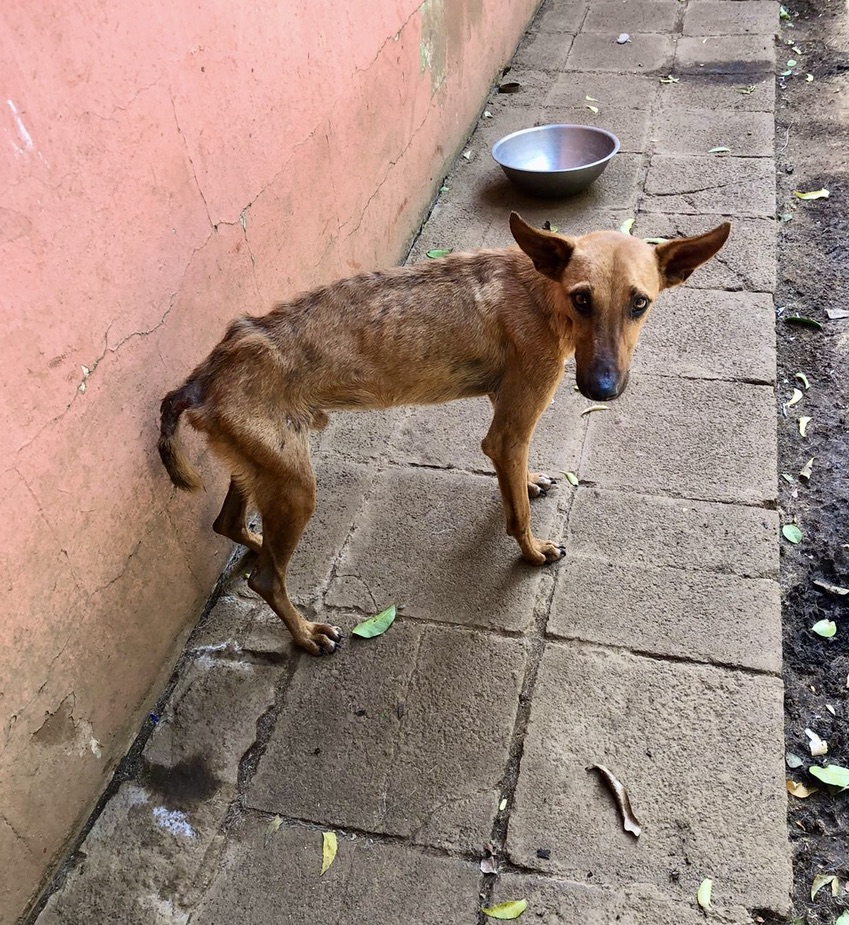
It’s been over a year since we met Canelo at one of our mobile clinics. In March 2021, Canelo couldn’t walk. He was approximately six to eight months old at the time. We were told that Canelo’s disability was likely caused by a neighbor throwing rocks at him and damaging his spine. He was just a baby, and already his health was in decline. Covered in fleas, ticks, and infected wounds, starving and dehydrated, Canelo was diagnosed with Ehrlichia (chronic tick-borne disease), parasites, and anemia.
But Canelo was loved by his family. So how could this happen?
Canelo’s guardians only had part-time work cutting sugar cane, making approximately $5.00 a day, their only option for income in their rural community. No mode of transportation to find work beyond their proximity. With one daughter and another on the way, they had limited funds to care for themselves; Canelo had to come second.
Over the course of ten months, NicaLove and partner Fundacion ADAN provided follow up home visits to give Canelo his best shot at survival. In addition to bloodwork and x-rays, these visits included antibiotics, wound care, flea and tick prevention, vitamins, and food. Canelo had to recover before he could be neutered.
Canelo’s guardians were committed to his recovery. His muscles were massaged and stretched daily and they encouraged him to walk, strengthening his mobility one day at a time. Even though he was skinny and deformed, Canelo became mobile. But not without quirk of course. Canelo could be seen shuffling along, his back left leg tapping his right as he went, like the rattling beat of a tambourine.
However, Canelo’s fight was not over. When Fundacion ADAN visited for another check-up in November, Canelo had infected burns on his tail, back, legs, and testicles. He had once again been abused by the same neighbor. Scalding water was thrown at him as tried to mate with the neighbor’s dog. His health was in decline and he was no longer walking. Without transportation, financial means, or a full understanding of how to care for an animal, Canelo was once again in a detrimental situation. While he was deeply loved, sometimes love just isn’t enough.
We were granted permission to take Canelo as it was clear that he would die if we didn’t.
Canelo healed at the shelter in Managua. His musical gait and heart infected everyone around him. He showed love and sweetness to humans and animals. Playful, friendly, and his ribs no longer pushed through his skin. This boy had become sufficiently fat.
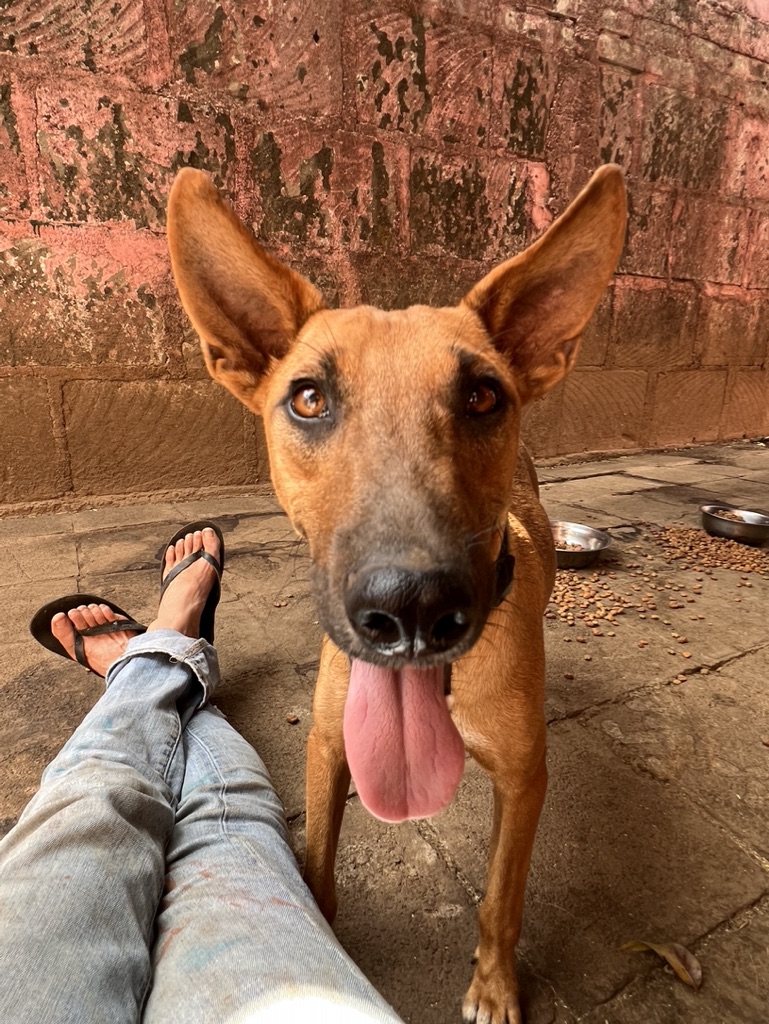
But just like a musical refrain, Canelo has circled back to needing our help. While in foster care, even though he had become a healthy boy, Canelo’s mobility declined. He was visibly in pain – getting up had become challenging and he whimpered each time. His foster mother brought him to a vet for a series of x-rays of his entire spine. The results were baffling. Nothing was visibly wrong.
Canelo’s story is a reminder that sometimes beauty can be overshadowed by the ugliness of human hate. Canelo’s family wanted the best for him, they tried their best for him, but ultimately they couldn’t be the best for him because of their own limitations. Canelo thrived with around the clock attention, but his past was so deeply situated in his bones the debilitation could not even be detected through x-ray.
But Canelo’s song isn’t over yet, he’s only two years old. With the help of donations, we’ll keep fighting for his life. And the more work we do in communities means the more education we can spread about the care of animals. Like Canelo’s tambourine, with your help we can change the fate of animals in Nicaragua one beat at a time.
